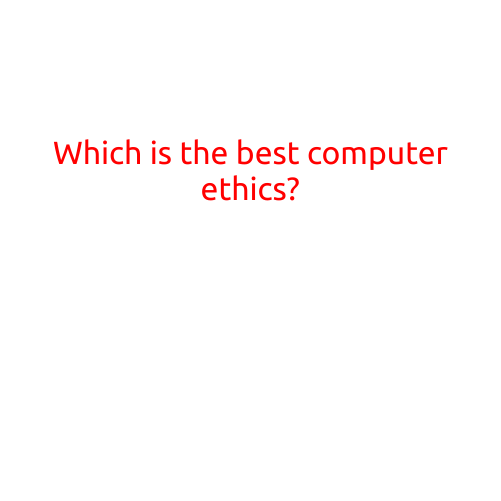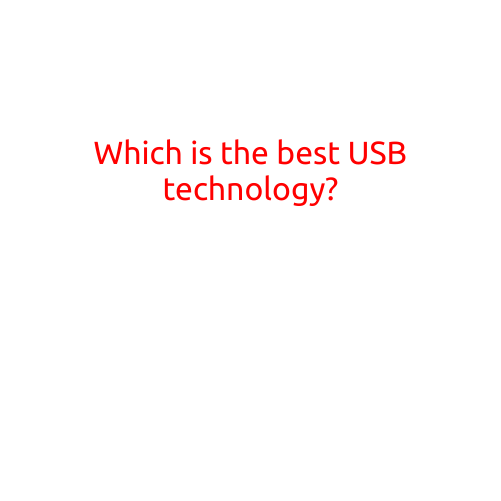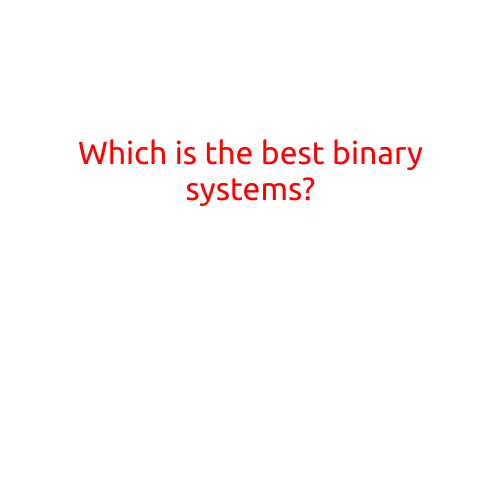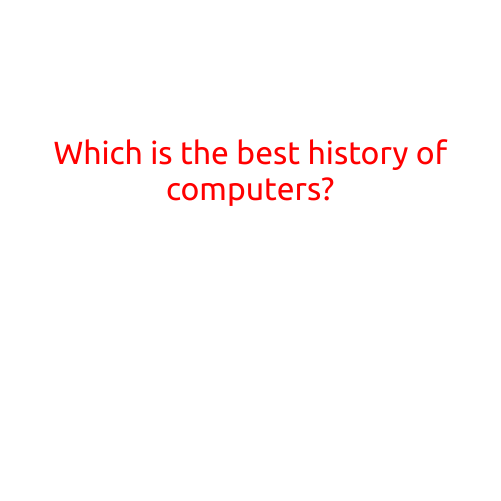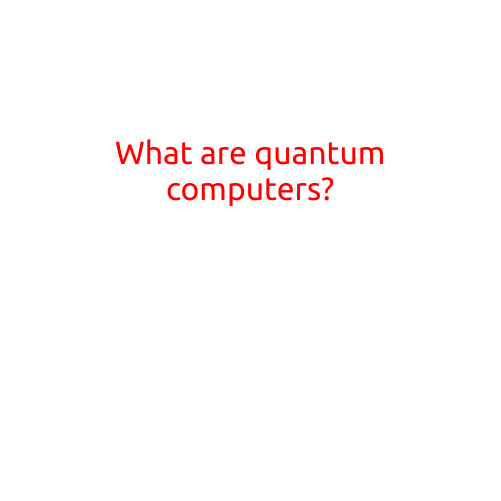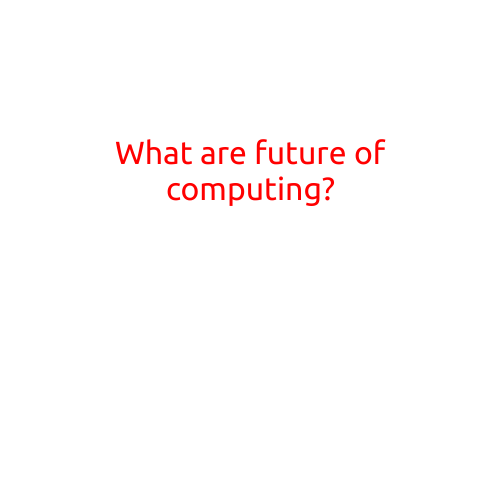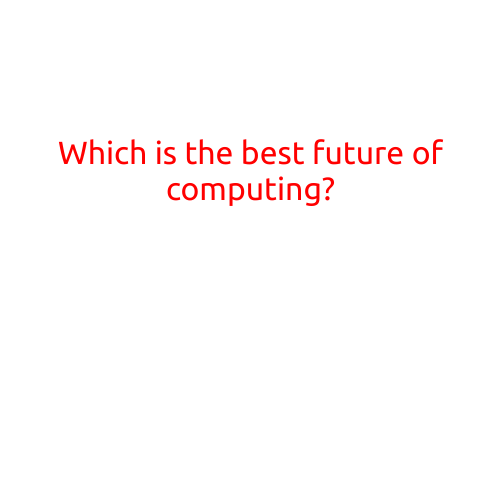
Which is the Best Future of Computing?
The future of computing is exciting, with numerous innovations and advancements on the horizon. As technology continues to evolve at a rapid pace, it’s essential to explore the various options and evaluate their potential to shape the future of computing. In this article, we’ll delve into some of the most promising and intriguing alternatives, examining their features, benefits, and limitations.
1. Quantum Computing
Quantum computing, developed by companies like IBM and Google, uses the principles of quantum mechanics to process information. This technology has the potential to solve complex problems that are currently unsolvable by traditional computers. Quantum computers can perform calculations exponentially faster than classical computers, making them ideal for tasks like:
- Simulating complex systems
- Breaking encryption codes
- Optimizing complex algorithms
Despite its promising capabilities, quantum computing still faces significant technical challenges, such as:
- Noise and errors in quantum systems
- Scalability limitations
- Interoperability issues
2. Neuromorphic Computing
Neuromorphic computing, inspired by the human brain, uses artificial neural networks to process information. This technology has the potential to:
- Mimic human cognition and learning
- Process large amounts of data in real-time
- Adapt to changing environments
Neuromorphic computing is being developed by companies like Intel and IBM, with potential applications in:
- Robotics and autonomous vehicles
- Healthcare and medical research
- Smart homes and cities
However, neuromorphic computing also faces challenges, such as:
- Understanding and replicating complex biological processes
- Balancing performance and energy efficiency
- Integrating with other computing systems
3. Edge Computing
Edge computing, also known as fog computing, brings computing closer to the user, reducing latency and improving performance. This technology is particularly useful for:
- Real-time processing of sensor data
- Low-latency video and audio processing
- Improving IoT device performance
Edge computing is being developed by companies like Dell and Cisco, with potential applications in:
- Industrial automation
- Retail and customer service
- Healthcare and patient care
However, edge computing also faces challenges, such as:
- Managing and securing data at the edge
- Ensuring seamless integration with cloud and core systems
- Balancing performance and energy efficiency
4. Hybrid Computing
Hybrid computing combines different computing paradigms, such as cloud, edge, and on-premise computing. This approach has the potential to:
- Optimize resource allocation
- Improve performance and scalability
- Enhance security and flexibility
Hybrid computing is being developed by companies like Microsoft and Amazon Web Services (AWS), with potential applications in:
- Enterprise data centers
- Cloud and on-premise infrastructures
- IoT and industrial automation
However, hybrid computing also faces challenges, such as:
- Integrating and managing different systems and architectures
- Ensuring seamless data flow and interoperability
- Balancing performance and cost
Conclusion
Each of these computing paradigms has its unique strengths and challenges, and the future of computing will likely involve a combination of these approaches. As the industry continues to evolve, it’s essential to explore and evaluate these options, considering factors like performance, scalability, security, and cost.
Ultimately, the best future of computing will depend on the needs and requirements of various industries and applications. By understanding the capabilities and limitations of each paradigm, we can work towards creating a computing future that is optimized for performance, efficiency, and innovation.
